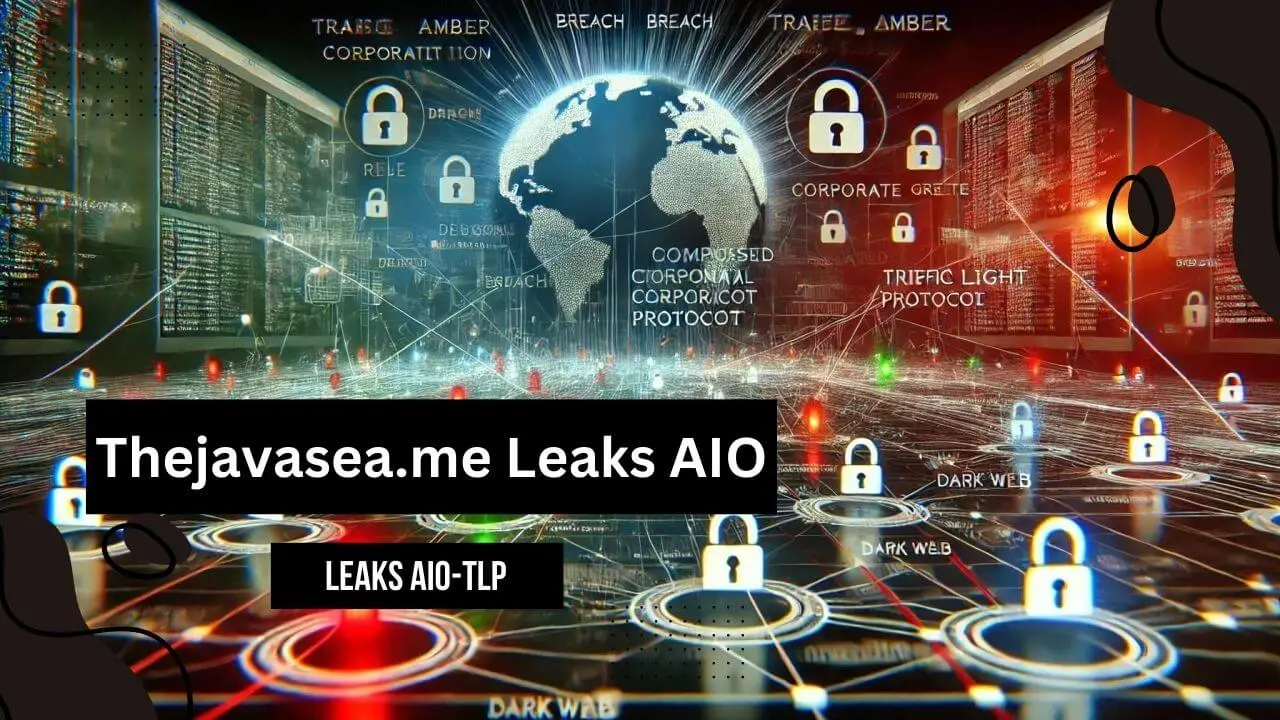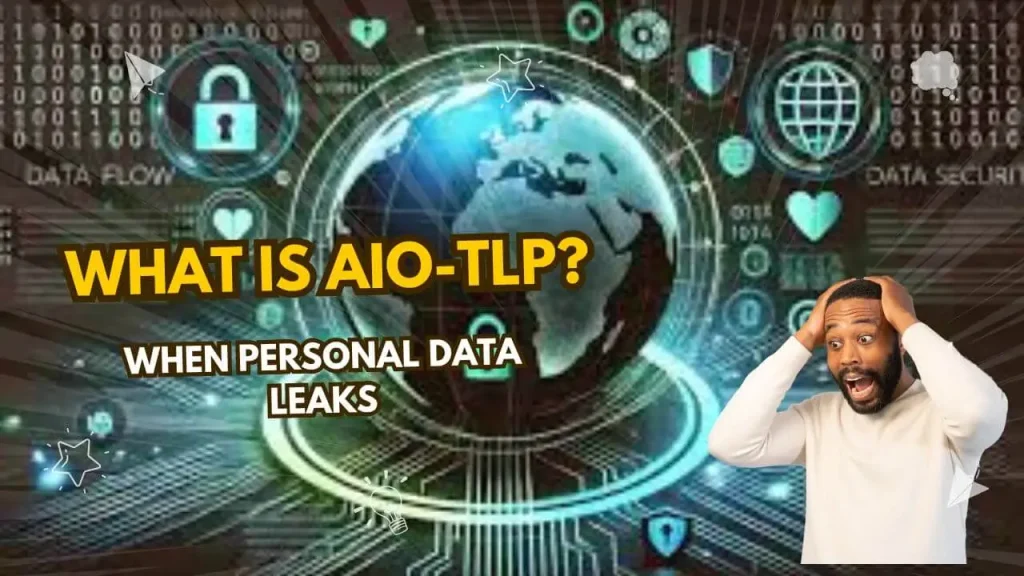Thejavasea.me Leaks AIO-TLP: Unveiling the Risks and Impacts on Digital Security

In an era where personal data and information are heavily digitized and stored on online platforms, ensuring the security of this data has never been more critical.
A single data breach can lead to severe consequences, affecting individuals, businesses, and governments. Recent events involving thejavasea.me and the leak of AIO-TLP data have raised alarm bells in the cybersecurity community, shedding light on how vulnerable digital platforms can be, and leaving many to question the trustworthiness of the systems designed to protect our personal information.
The leak of sensitive data via this platform has highlighted the complexities of digital security and the profound risks posed by unauthorized access to private information.
How Leaks from thejavasea.me and AIO-TLP Are Gaining Attention
Thejavasea.me is a website known for being a dark web portal where leaked or stolen information circulates, often related to personal, business, and governmental data. In recent months, the site has made headlines due to its involvement in the leak of AIO-TLP data, an acronym standing for All-In-One Traffic Light Protocol. The leaked data has sent shockwaves through the cybersecurity community, highlighting the vulnerabilities in the way sensitive information is handled, shared, and accessed on digital platforms.
Understanding why these leaks are gaining so much attention requires a deep dive into both the content of the leaks and the broader implications they have on digital privacy and security. When data is leaked, especially from a platform like the java sea.me, it sends a message about how easily confidential information can be accessed and misused. The AIO-TLP leak in particular has raised concerns not only because of the scale of the data compromised but also due to the nature of the platform itself.
What is AIO-TLP?
AIO-TLP, which stands for All-In-One Traffic Light Protocol, is a system used to classify and store data in a structured way, based on its level of sensitivity. The protocol is designed to ensure that data is shared in a controlled manner by labeling it according to its confidentiality. The protocol employs a color-coding system to help organizations categorize data based on its intended audience and usage.
- Red: Data marked as red is highly confidential and should only be shared with trusted, authorized parties.
- Amber: Amber data can be shared with certain people or groups but should be done cautiously, with care taken to protect its integrity.
- Green: Green data can be shared more freely within a designated group or community.
- White: White data is public and can be shared without restriction.
EXPLORE MORE
The AIO-TLP protocol is intended to help organizations manage sensitive information in a secure manner, ensuring that it is accessed only by those who have the proper clearance or need to know. However, with the recent leak of AIO-TLP information through thejavasea.me, the integrity of this system has been called into question, as it illustrates how easily this classification system can be compromised.
Understanding Thejavasea.me Leaks AIO
Thejavasea.me is a website that operates within the darker parts of the internet, a space where illicit activities often thrive. This platform has long been known for hosting stolen, hacked, or leaked data. It acts as a marketplace where cybercriminals and hackers can freely exchange sensitive information such as personal data, financial records, government files, and even business secrets.

The recent leaks related to AIO-TLP data were not random occurrences. Instead, they appeared to be part of a coordinated effort to extract, steal, and distribute sensitive information on a massive scale. Hackers managed to infiltrate systems, bypass security measures, and extract data that was then published on thejavasea.me for public access. As a result, millions of records containing personal, business, and government data were made available for anyone to access, putting countless individuals and organizations at risk.
While the site itself is shrouded in anonymity, it is clear that the data leaking from the platform is neither accidental nor benign. It represents a serious breach of trust, and it has exposed critical flaws in digital security measures that were supposed to protect personal information.
Recent Leak of AIO-TLP Information and Its Impact on the Digital Landscape
The leak of AIO-TLP data through thejavasea.me has had far-reaching consequences. When sensitive information like this is exposed, the repercussions can be both immediate and long-lasting. Hackers and cybercriminals can exploit the data for various malicious purposes, including identity theft, financial fraud, and even corporate espionage.
In some cases, however, the leak of data can serve a more positive purpose. Activists, journalists, and whistleblowers may use the leaked information to expose corruption, misconduct, or government malfeasance. For example, sensitive government data that was leaked could reveal unethical actions by powerful individuals, leading to public outcry and political reform. In this way, data leaks can sometimes be used as a tool for transparency and accountability, though the ethical implications of using stolen data for such purposes are still debated.
EXPLORE MORE
On the other hand, the leak of personal information can have disastrous consequences. Inaccurate or misleading data can lead to character assassination, with individuals being wrongfully implicated in criminal activity or fraud. Furthermore, without proper regulation and verification, data leaks from the dark web are a breeding ground for misinformation and falsehoods, potentially damaging reputations and careers.
Categories of Data Affected by thejavasea.me Leaks
The leaked data can be broken down into several categories, each with its own set of risks and implications. Among the most concerning categories are:
- Government Data: Sensitive government information, such as classified documents, official communications, and security protocols, can have a significant impact on national security. When this data is leaked, it can compromise the safety and stability of entire nations.
- Personal Data: Personal information like names, addresses, email addresses, and financial records are often targeted by hackers. When leaked, this data can be used for identity theft, financial fraud, and other forms of cybercrime.
- Business Documents: Leaked business documents, including contracts, financial reports, and internal communications, can cause significant damage to companies. Competitors may gain access to valuable proprietary information, and confidential business dealings may be exposed to the public.

What to Do When Personal Data Leaks
When personal data is leaked, it’s crucial to act quickly to minimize the potential damage. Both individuals and organizations must be proactive in responding to such breaches.
- Enhance Encryption Protocols: Organizations must ensure that their data is encrypted using state-of-the-art encryption methods. Multi-factor authentication (MFA) can also add an extra layer of protection, ensuring that unauthorized individuals cannot access sensitive data.
- Educate and Train Employees: Employees must be regularly trained on the importance of data security and how to prevent leaks. Staff should be made aware of the common ways data can be compromised, including phishing attacks and social engineering scams.
- Collaborate with Cybersecurity Experts: Businesses and governments should work with cybersecurity firms to implement robust defense systems that can detect data breaches in real-time. When a breach is identified, swift action is required to prevent further damage.
- Alert Affected Parties: When a data breach occurs, it’s important to notify affected individuals as soon as possible. Individuals should be advised to change their passwords, monitor their bank accounts for unusual activity, and take other precautions to safeguard their personal data.
EXPLORE MORE
How to Protect Online Personal Data
As individuals increasingly rely on online platforms, it’s more important than ever to protect personal data. There are several steps people can take to enhance their digital security:
- Use Strong, Unique Passwords: One of the most basic but effective ways to protect online accounts is to use strong passwords. Passwords should contain a mix of uppercase and lowercase letters, numbers, and symbols.
- Enable Multi-Factor Authentication: MFA adds an extra layer of security by requiring users to verify their identity through a second method, such as a code sent to their phone or email.
- Be Cautious with Sharing Personal Information: Avoid oversharing personal information on social media or unsecured websites. Be mindful of the risks involved in sharing personal details online.
- Beware of Suspicious Links and Emails: Phishing scams are a common method of stealing personal data. Always be cautious when receiving unsolicited emails or clicking on unfamiliar links.
Conclusion
The recent leaks on thejavasea.me involving AIO-TLP data have underscored the vulnerabilities that exist in our digital world. These leaks serve as a stark reminder that no system is completely foolproof, and sensitive data is always at risk of being exposed. The implications of these leaks can be far-reaching, affecting everything from personal privacy to national security.
In the face of these threats, it’s essential that both individuals and organizations take steps to protect their data. Implementing strong encryption protocols, using multi-factor authentication, and staying vigilant against phishing attacks are just a few of the measures that can help mitigate the risks of data leaks. By taking these precautions, we can safeguard our personal information and ensure that the digital landscape remains as secure as possible.
